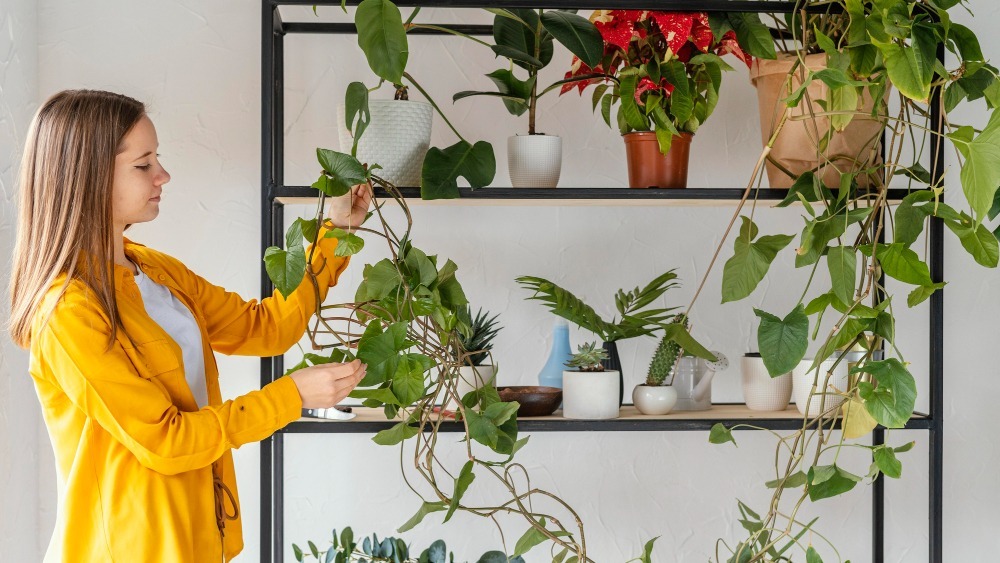Vertical gardening offers a creative solution for urban dwellers and space-constrained gardeners to maximize their harvest. In this guide, we’ll explore how to effectively utilize vertical space for growing a variety of plants, from vegetables to herbs and flowers.
Explore how to effectively utilize vertical space for gardening
Section 1: Understanding Vertical Gardening
What is Vertical Gardening? Vertical gardening involves growing plants upwards rather than outwards, using structures like trellises, walls, and containers. It maximizes space and allows for efficient use of sunlight and resources.
Benefits of Vertical Gardening
- Space Efficiency: Ideal for small balconies, patios, and urban gardens.
- Increased Yield: Grow more plants in less space, maximizing harvest.
- Aesthetic Appeal: Create green walls and living art installations.
- Improved Air Circulation: Reduces disease and pest problems.
Section 2: Planning Your Vertical Garden
Assessing Your Space
- Evaluate available space: balcony, wall, fence, or indoor area.
- Consider sunlight exposure: Choose plants based on light requirements.
Choosing Plants for Vertical Gardening
- Best Plants for Vertical Gardens: Tomatoes, cucumbers, peppers, herbs, and flowers.
- Factors to Consider: Root depth, climbing habits, and growth requirements.
Section 3: Designing Your Vertical Garden
Vertical Gardening Structures
- Trellises, arbors, vertical planters, hanging baskets, and wall-mounted pots.
- DIY Options: Creative solutions using recycled materials.
Vertical Garden Layout
- Utilize vertical space efficiently: Layer plants for maximum sunlight exposure.
- Design Principles: Ensure stability and accessibility for maintenance.
Section 4: Planting and Maintenance Tips
Preparing Your Vertical Garden
- Soil Preparation: Use well-draining soil enriched with compost.
- Fertilization: Organic fertilizers to promote healthy growth.
Planting Techniques
- Planting Seeds and Seedlings: Proper spacing and depth.
- Watering Strategies: Drip irrigation, self-watering systems, or hand-watering.
Vertical Garden Maintenance
- Pruning and Training Plants: Support climbers with trellises and ties.
- Pest and Disease Control: Monitor regularly; use organic remedies.
Section 5: Maximizing Yield and Harvest
Companion Planting
- Benefits: Enhance growth, repel pests, and improve flavor.
- Examples: Tomatoes with basil, marigolds with vegetables.
Harvesting Techniques
- Harvesting Tips: Pick fruits and vegetables at peak ripeness.
- Continuous Harvest: Extend the growing season with succession planting.
Section 6: Troubleshooting Common Issues
Common Vertical Gardening Problems
- Overcrowding: Thin plants to prevent competition for nutrients.
- Nutrient Deficiencies: Use organic fertilizers and compost.
Pest and Disease Management
- Prevention Strategies: Rotate crops and practice good hygiene.
- Natural Remedies: Neem oil, insecticidal soap for pests.
Section 7: Vertical Garden Inspiration and Ideas
Design Inspirations
- Showcase Innovative Designs: Vertical gardens in urban settings.
- Before-and-After: Transformations and success stories.
Section 8: Sustainable Practices in Vertical Gardening
Introduction to Sustainability
- Benefits of sustainable gardening practices: Reducing environmental impact, conserving resources.
Key Sustainable Techniques
- Water Conservation: Implementing drip irrigation systems, using mulch.
- Composting: Creating nutrient-rich soil amendments from kitchen scraps and garden waste.
- Integrated Pest Management (IPM): Natural pest control methods to minimize chemical use.
Section 9: Vertical Gardening in Different Climates
Adapting to Your Climate
- Cold Climates: Extending the growing season with cold frames or indoor setups.
- Hot Climates: Choosing heat-tolerant plants and shading techniques.
Examples from Various Regions
- Case studies or testimonials from gardeners in different climates showcasing their setups and successes.
Section 10: Vertical Hydroponic Systems
Introduction to Hydroponics
- Benefits of hydroponic gardening: Faster growth, higher yields, water efficiency.
Setting Up a Vertical Hydroponic System
- Equipment needed: Vertical towers, nutrient solutions, growing medium alternatives.
- Plant choices: Leafy greens, strawberries, herbs suitable for hydroponics.
Section 11: Creative Vertical Garden Design Ideas
Innovative Vertical Structures
- Living Walls: Vertical gardens integrated into building facades or interior spaces.
- Repurposed Materials: Using pallets, old furniture, or gutter gardens for unique designs.
Seasonal and Holiday Themes
- Decorating vertical gardens for holidays or changing seasons with seasonal plants and decor.
Section 12: Community and Educational Benefits
Educational Opportunities
- School Gardens: Benefits of vertical gardens in educational settings for hands-on learning.
- Community Gardens: Engaging neighborhoods and promoting local food production.
Conclusion
Vertical gardening is a versatile and efficient way to grow a productive garden in limited space. By following these tips and techniques, you can maximize your harvest and enjoy the benefits of fresh produce right at home. Start your vertical garden today and reap the rewards of sustainable and space-saving gardening.


